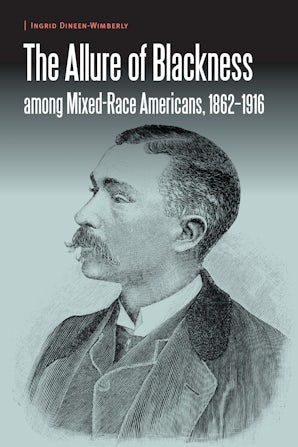“In this masterful study Ingrid Dineen-Wimberly has administered a powerful antidote to the historical amnesia that has clouded—or nearly erased—our understanding of mixed-race, Black-identified Americans who played important roles in politics, artistic performance, business, and diplomatic relations. . . . Admirably researched and written with éclat, The Allure of Blackness sparkles with life stories rarely encountered in the history books from which young Americans derive their understanding of our past—and how it has affected the world we live in today.”—Gary B. Nash, professor emeritus at the University of California at Los Angeles and author of Forbidden Love: The Hidden History of Mixed-Race America
“With The Allure of Blackness, Ingrid Dineen-Wimberly positions herself as the preeminent interpreter of the Black elite of a century ago, as she challenges the binary assumptions of monoracialist interpreters, for whom one can be only Black or White. She reveals complicated strains of class positioning and racial reasoning that other authors have missed entirely or simplified greatly. Her book is utterly original, based on vast acquaintance with extant literature, and enriched by monumental archival digging. Professor Dineen-Wimberly will cause a major rethinking of the purposes, motivations, and strategies of these crucial generations of Black leaders.”—Paul Spickard, Distinguished Professor of History and Black Studies at the University of California, Santa Barbara
“A masterful examination. Dineen-Wimberly brings considerable depth, breadth, and nuance to explaining the disproportionate number of mixed-race individuals among the ranks of African American leadership. The riveting first-person testimony of mixed-race individuals themselves is an indispensable component of her analysis. Consequently, this book will be essential reading for scholars and students alike.”—G. Reginald Daniel, professor of sociology at the University of California, Santa Barbara
